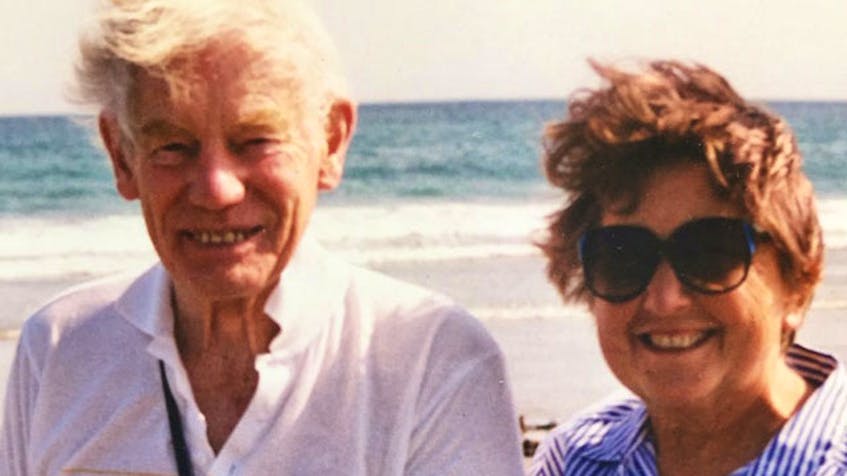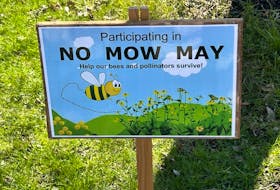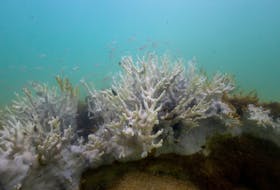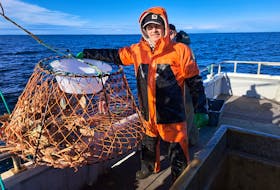Up high in his obituary Friday — amid the mentions of his more than 14 books, his Order of Canada, and his teaching abilities while a professor at Dalhousie University — was something about Peter Waite that caught the eye: every person who goes swimming at Crystal Crescent Beach has the historian, and a few of his friends, to thank.
When I called his youngest daughter Anya for the details she said it happened in the mid-1950s, a few years after her dad, who was born in Toronto, and served in the Canadian navy during the Second World War, began teaching at Dal.
He and a couple of similarly minded young professors liked to get old survey maps of Nova Scotia, and look for interesting places to visit, the farther off the beaten track the better.
“They bushwhacked out along the old military track from Pennant Point to Coot Cove,” she told me Friday, four days after he died in Camp Hill Veterans' Memorial Hospital at 98.
At Coot Cove they discovered a trio of luminous beaches. They also met a businessman who told of his plans to turn the three of them into a sand-and-gravel quarry.
“They were horrified,” said the daughter, scientific director of Dalhousie's Ocean Frontier Institute.
One of them, however, knew the premier of Nova Scotia, which, depending upon the year, could have been Angus L. Macdonald, Harold Connolly or Henry Hicks.
The way Anya Waite tells it, a phone call was made and tragedy was averted, a fact that gave her dad much pleasure throughout his long, notable life.
“He was an explorer, intellectually and physically,” she said of her father who taught history at Dalhousie for 35 years and wrote biographies of three Canadian prime ministers.
She and her sister Nina saw his relentless curiosity in so many ways: how, for example, Waite's “special passion” for cathedrals and small churches meant that when the family travelled “he had to climb every church spire in England.”
How, while writing his biography of Sir John Thompson, Waite found a box of letters from the fourth prime minister of Canada back to his Nova Scotian wife. They were written in such an undecipherable shorthand that he sent them to the legendary Bletchley Circle codebreakers in England — who discovered enough amorous passion on those pages to help Waite humanize his subject.
How, when the Waites moved into a house on a treeless lot in Clayton Park, he led his children into the nearby forest, digging up fir and spruce trees, along with bracken ferns and lady slippers for replanting on their property.
As much as anything, their father's inquisitiveness — his desire to see and do everything — was evident in the way Waite lived in the physical world in the adopted province to which he was devoted.
He and his friends trekked everywhere across Nova Scotia, then, when his children arrived, they became his sidekicks.
“Sport was just another way of exploring,” said Anya. So, as a family, they swam and hiked, skated, sailed and downhill skied.
Waite's obituary underscores his love of landscape and his view that “one had to walk history to learn about it.”
He was a “key member” of the Historic Sites and Monuments Board of Canada “putting important historical spaces physically on the map for Canadians.” According to the family-written obituary, Waite was also a strong supporter of the excavations at Fortress Louisbourg “which we inspected in the early years as windswept plots flanked by white transect lines.”
He found joy everywhere, it is my understanding: reading Peter Pan and Winnie the Pooh to his young children, and watching hockey where he perpetually hoped for the underdog, but also in the poetry of Goethe, and the Scottish and Nova Scotia folk songs he taught himself to play on guitar and piano.
“He radiated contentment,” his daughter told me, as befitting a man who never expected to be able to make his professional life as he did, using his storytelling gifts to present the warp and woof of Canadian history.
I experienced those gifts, along with a few hundred other students in the late 70s in a Dalhousie classroom.
There, I remember, he made John A. Macdonald, Lous Riel and all the others live and breathe, and imbued the forging of the CPR and Confederation with the depth of drama we weren't used to associating with Canadian history.
There, even glimpsed from the back row, I recall thinking that I was watching a happy, happy man.









